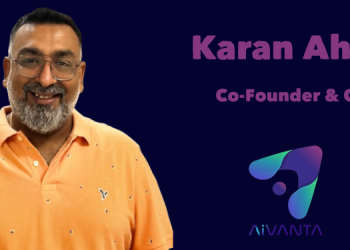More often than not, maximizing ROI is primarily discussed along the lines of creative best practices, generative AI, privacy trends, etc. overlooking the importance of supply path optimisation. Supply Path Optimization has become one of the most sought after strategies that ensure advertisers work with the most efficient, transparent, and cost-effective media suppliers, as this became critical for advertisers and brands to cut unnecessary costs and drive better value from their campaigns with the rise in popularity of programmatic advertising, when the cost of the supply path in the open internet became critical.
Decoding Supply Path Optimisation
The open internet is a very dynamic, diverse ecosystem that encompasses publishers, mediation platforms, supply partners, ad networks, and DSPs. All of these players are interconnected and produce many competing bid requests for a given ad impression.
SPO is a practice whereby media buyers scout for the shortest and most effective paths to ad inventory and then use those paths to transact with sellers. Therefore, the primary objective would be to improve the transparency of the ad tech supply chain and raise the efficiency of programmatic advertising.
SPO creates a mutually beneficial ecosystem for both advertisers and publishers. For advertisers, these would be the best assurances against duplicated auctions, increasing campaign performance, avoiding costs, and getting the maximum ROI for advertisers. For publishers, the advantages would be improved ad fill rates, higher revenue, and greater user experience. Additionally, an increase in transparency tends to lower the fraud risk and also creates greater trust between publishers and marketers.
SPO refers to a special algorithm inside a demand-side platform that reports the best connection from the bids to an impression.
Contrary to the open Internet, walled gardens are controlled environments in which Google and Meta serve ads on their owned and operated inventory. The auctions’ ecosystems set boundaries for creatives and measurement. On the contrary, in-app advertising in the open internet forms an ecosystem of millions of independent apps, mediation platforms, supply partners, ad networks, and DSPs.
Where many app marketers will certainly be aware of advertising inside walled gardens, the open internet provides huge incremental scale and, when used efficiently, limitless growth prospects.
Key Elements of Successful Supply Path Strategies
The best way to achieve the highest ROI on open internet is through an effective SPO strategy that also focuses on the following elements :-
a. Transparency
As is always the case with programmatic advertising, openness is infrequently given. The advertisers are usually not so informed as to the various nodes that their ad dollars get spent through in a supply chain, thus attracting higher fees and lessened efficiency. Accepting such solutions such as Ads.txt ensures buyers will acquire inventory from authorized legitimate sellers.
b. Data-Driven Decision Making
Supply path strategies require data. Evaluating performance data by SSP, ad exchange, and source of inventory can help advertisers determine which ones are generating the greatest value at the least cost. Key performance metrics to consider include:
Win rate: Percentage of bids winning the auction.
Bid rate: The percentage of impressions that saw at least one bid.
Viewability: Frequency of ads being viewed by actual users.
Placing emphasis on high-viewability placements will increase advert effectiveness. According to IAS, Integral Ad Science viewable ads are 54% more likely than non-viewable ads to result in conversions.
c. Minimizing Intermediaries
No unnecessary fees reduce the number of intermediary parties in the ad-buying process. Some of the SSPs and ad exchanges are redundant as well, bringing little value to the advertisers. Consolidation of the number of partners and working with fewer trusted supply-side platforms can provide advertisers with better deals and more direct access to premium inventory.
d. Publisher Partnerships
Optimizing the path of supply also incorporates direct relationships to premium publishers. Whether through preferred deals or PMP, it helps advertisers circumvent the open exchange to engage directly with the publishers, ensuring they acquire higher-quality inventory as a result of this. They enjoy better targeting and higher viewability and cost-effective ad buying.
Role of Technology in SPO
a. Header Bidding
Header Bidding: Programmatic Aide – This is an approach in which a publisher sells their inventory to multiple ad exchanges simultaneously before calling their ad server. This increase’s competition for that inventory, which raises CPMs for the publisher while ensuring the best offerings from advertisers at their best possible price.
b. Machine Learning Algorithms
Machine learning and AI are driving the use of SPO as it is bringing significant changes to enable advertisers to predict outcome, optimize bid strategies, and thus get real-time identification of the most efficient supply paths. For instance, machine learning can easily find fraudulent activity, thereby saving advertisers from losing money on invalid traffic.
Maximizing ROI Using SPO
With the end benefit of achieving supply path strategies, it would amount to the highest ROI. Reducing the number of hops an ad takes, giving full visibility, and establishing direct relationships with publishers would enable advertisers to shave the cost out from their programmatic campaign while improving the quality of the inventory accessed.
Challenges for SPO Implementation
Although the advantages of SPO are well-valued, the implementation of these strategies is certainly not without its pains. Among the significant difficulties is that there is still a lack of standardized metrics from different SSPs to the ad exchanges, which makes it very hard for advertisers to compare performance.
Superior supply path strategies are no longer a nice-to-have in the modern digital advertising landscape-they’re a must for maximizing ROI. With an emphasis on visibility, minimal intermediaries, exploitation of data, and technology that employs header bidding and machine learning, advertisers can have a more streamlined and cost-efficient supply chain. In the open internet, where it’s projected that over $155 billion will be spent programmatically by 2024, it’s not a good time to ignore SPO strategies but actually the best time to adapt.

















